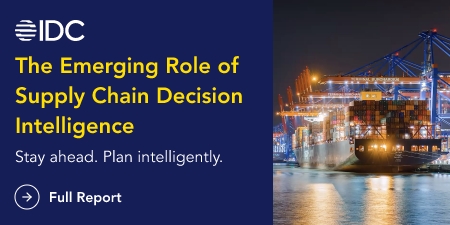
AI-powered automation is the most potent enabler available to the supply chain domain today. We all concede to artificial intelligence’s transformative power and potential to transform supply chains into self-regulating utilities that optimally manage end-to-end workflows with little human intervention.
Despite substantial investments and ongoing research, many businesses struggle to maximize the value from AI in their supply chains. According to supply chain planning experts at ICRON, the issue is not with the technology itself but how it is applied. Here is an in-depth look at some reasons why AI-enabled supply chains fail
Challenges of AI-enabled Supply Chains
-
The Complexities of AI-Enabled Supply Chain Management
Supply chain management is an inherently complex operation. To succeed, it requires the participation of several functions (procurement, manufacturing, logistics, and sales) and subfunctions (demand planning, inventory planning, and scheduling). Managing competing requirements from different functions and subfunctions requires intelligent decisions based on comprehensive data.
-
The Limitations of Relying Solely on Predictive Analytics
Most AI-enabled supply chains use AI for analytics and prediction, such as demand forecasting and production planning. Although these are practical applications of artificial intelligence, they represent only a tiny part of the technology’s potential. Companies should apply AI to make recurring decisions by recognizing patterns in big data that humans cannot see.
-
Overcoming Fragmented Integration in AI Systems
Supply chains must seamlessly integrate AI end-to-end with a capacity for learning and adaptation to maximize the return on AI enablement. Incomplete integration hampers the use of AI, restricts the evolution of supply chain functions, and delivers diminishing returns over the long term. Companies must deploy an AI-powered learning system integrated across functions to unlock its full potential.
-
The Risks of Launching AI Without Proper Preparation
The efficacy of an AI-enabled tool is tied to the quality and accessibility of data. Attempting to launch AI-enablement in your supply chain with a fragmented data system and inconsistencies in data quality leads to suboptimal AI performance. To avoid these pitfalls, organizations should prioritize unifying data sources and invest in robust data governance frameworks, ensuring that AI systems are fed with accurate, consistent, and comprehensive data across the supply chain.
-
Addressing the Lack of AI and Supply Chain Experts
Building a resilient and sustainable AI-enabled supply chain demands a unique combination of deep supply chain knowledge and advanced AI expertise. Without investing in partnerships with the right experts to bridge the gap, implementations may be misaligned, and the business may not be able to capitalize fully on AI capabilities. Organizations should engage with a supply chain planning partner to ensure success before embarking on the journey to establish an AI-enabled supply chain.
Realizing the Vision of an AI-Enabled Supply Chain
Building an integrated learning system to make an AI-enabled supply chain a reality can be intimidating, even for seasoned supply chain leaders. Our experts recommend the following steps to realize the vision
- Deploy AI for Cross-functional Decisions: Applying artificial intelligence to use cases involving several organizational functions rather than confining AI to a specific planning activity. Prioritize cross-functional, transactional applications for which AI can recommend decisions amidst uncertainty based on its learning from comparable situations in the past.
- Design Smarter Ways for People and AI to Work Together: Shift away from relying solely on human judgment supported by reports. Instead, create a model where AI continuously gathers insights across the supply chain, highlights key issues, and brings only the most critical decisions to planners and managers. This allows your team to focus their time and expertise where it truly matters.
- Foster Trust in AI-driven models: Practitioners must collaborate with data scientists and system architects to build and refine the AI engine to improve recommendations. The Management must embed trust-building into a longer-term operating model strategy that includes new roles for traditional decision-makers.
- Gear AI-enablement Towards Automation: Digitalization efforts in an AI-enabled supply chain must prioritize automation over visibility and analytics. Improving visibility and analytics improves accountability and aids informed decisions. However, without proper automation, planners may face several complexities while processing the insights and making the right decisions. Test the application of automation to generate decisions while planners collaborate with system architects to improve the AI engine.
Maximizing AI’s potential in supply chains necessitates a comprehensive approach that transcends basic predictive analytics. Success hinges on leveraging AI for autonomous decision-making, ensuring thorough integration, overcoming cultural barriers, and investing in the requisite talent and data infrastructure. Through such a holistic strategy, AI-driven supply chains can achieve their full promise.














